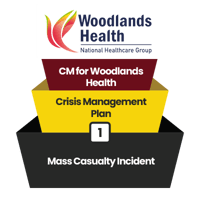List of Technology Threats
Introduction
![[CM] [WH] [E3] [RAR] [T1-2] [Technology] List of Threats](https://no-cache.hubspot.com/cta/default/3893111/d844e021-74a3-4c31-bb5c-737a4d7adc14.png) As a major public healthcare provider within the National Healthcare Group (NHG), Woodlands Health (WH) operates in a highly digitised and interconnected environment, delivering acute, sub-acute, rehabilitative, community, and specialist care across its 1,000-bed integrated campus.
As a major public healthcare provider within the National Healthcare Group (NHG), Woodlands Health (WH) operates in a highly digitised and interconnected environment, delivering acute, sub-acute, rehabilitative, community, and specialist care across its 1,000-bed integrated campus.
With extensive use of electronic medical records (EMR), advanced medical technologies, telehealth, innovative hospital systems, and interconnected operational platforms, WH faces a growing range of technological threats that may disrupt clinical operations, compromise patient safety, or impede continuity of care.
Given Singapore’s national direction towards Smart Healthcare, the increasing complexity of healthcare infrastructure, and the expanding threat landscape—including cyber-attacks, system failures, and emerging digital vulnerabilities—it is essential for WH to proactively identify, assess, and mitigate technological crisis scenarios.
This chapter provides a comprehensive overview of key technology-related threats relevant to WH at both the national and organisation levels.
Table: List of Technology Threats
|
Crisis Type |
Type of Threats / Crisis Scenario (Technological) |
Description of Threats |
Country Level |
Organisation Level (Woodlands Health) |
|
Cybersecurity Threats |
Ransomware Attack on Healthcare Systems |
Malicious actors encrypt critical systems, disrupting access to EMR, diagnostic systems, clinical applications, and administrative services. |
National healthcare institutions (e.g., SingHealth breach) remain key targets due to sensitive medical data. |
WH’s integrated EMR, smart wards, and specialist systems may face shutdown, affecting patient care, surgeries, pharmacy, diagnostics, and admissions. |
|
Cybersecurity Threats |
Data Breach / Theft of Patient Information |
Unauthorized access or exfiltration of personal, medical, or financial data. |
National-level cyber targets include government and healthcare databases. |
Exposure of patient data, breach of trust, regulatory penalties under PDPA, and reputational damage to WH. |
|
ICT Infrastructure Failures |
Nationwide Network or Internet Outage |
Failure of telecom networks is impacting connectivity across institutions. |
Dependency on national telcos makes healthcare susceptible to large-scale outages. |
Disruption to telehealth, inter-campus communication, digital appointments, remote monitoring systems, and internal communications. |
|
ICT Infrastructure Failures |
Hospital Network Downtime / System Failure |
WH’s internal network or servers fail, disabling critical applications. |
National pressure on ICT resilience (e.g., GovTech systems). |
Disruption to clinical documentation, medication management, laboratory systems, radiology systems, care coordination platforms, and smart wards. |
|
Medical Technology Failure |
Critical Medical Device Breakdown (e.g., ventilators, infusion pumps, imaging machines) |
Hardware or software malfunction of essential life-support or diagnostic equipment. |
National reliance on imported med-tech may lead to supply issues during crises. |
Impact on ICU, emergency, diagnostic imaging, and surgery operations; delays in treatment and compromised patient safety. |
|
Medical Technology Failure |
Biomedical System Integration Failure |
Failure of interoperability between EMR and medical devices. |
Broader national shift to integrate smart healthcare ecosystems. |
Incorrect data transfer from devices to EMR, clinical decision errors, and workflow delays. |
|
IT Security Vulnerabilities |
Insider Threat – Unauthorized Access or Abuse of Systems |
Staff misuse, negligence, or malicious exploitation of digital systems. |
National emphasis on insider risk management (the health and public service sectors are high-risk). |
Compromised EMR records, disruption to operations, potential fraud, tampering of data, and patient safety risks. |
|
Digital Health Disruption |
Telehealth Platform Failure |
Outages or cyber-attacks affecting remote consultation services. |
Telehealth adoption is expanding nationally; system-wide failures may impact multiple hospitals. |
Impacts WH’s remote patient care, chronic disease management, and community follow-up, leading to delays in care delivery. |
|
Smart Hospital Technology Failures |
Building Management & Smart Facility System Outage |
Failure of smart lighting, HVAC, pneumatic tube systems, access control, and automated facility systems. |
National push for smart infrastructure increases reliance on automation. |
Affects patient comfort, infection control, medicine transport, internal logistics, and security systems across the WH Campus. |
|
Emerging Technology Risks |
AI System Failure or Algorithmic Errors |
Malfunction or errors in AI-driven clinical decision support tools or operational automation. |
National-level regulation of AI is evolving; risk of systemic bias or errors. |
Incorrect medical recommendations, triaging errors, disrupted scheduling, or misinterpretation of test results. |
|
Supply Chain Technology Risks |
Disruption of Digital Supply Chain Platforms |
Failure or cyber-attack on vendors providing IT, cloud services, medical tech, or digital procurement. |
National healthcare institutions rely on regional/global suppliers. |
Affects medical supplies, pharmaceuticals, equipment maintenance, and cloud-hosted healthcare applications. |
|
Digital Fraud or Scams |
Phishing, Social Engineering, or Business Email Compromise |
Attackers impersonate vendors, staff, or leadership to steal funds or access. |
A national rise in scam incidents across public institutions. |
Financial loss, procurement errors, fraudulent orders, and compromise of internal systems at WH. |
Summing Up ...
Technological threats pose significant and evolving risks to Woodlands Health due to its reliance on integrated digital platforms, medical technologies, smart facility systems, and extensive patient data networks.
As WH continues to advance its digital ecosystem and deliver person-centred, technology-enabled care, the potential impact of technological crises becomes more profound.
Understanding these risks—across cybersecurity, infrastructure failures, medical device vulnerabilities, emerging digital threats, and national-level technology disruptions—is essential for building a resilient crisis management and business continuity framework.
This comprehensive list forms the foundation for the next stages of crisis planning, including crisis prevention strategies, risk assessment, mitigation, response planning, and operational readiness to ensure uninterrupted, safe, and high-quality care for the Northern community of Singapore.
Operational Readiness: Crisis Management Implementation for Woodlands Health |
|||
| eBook 3: Starting Your Crisis Management Implementation | |||
![[CM] [WH] [E3] [RAR] [T1-2] List of Threats](https://no-cache.hubspot.com/cta/default/3893111/bf0c73a6-f409-4812-841c-fb74ae1f25fd.png) |
![[CM] [WH] [E3] [RAR] [T1-2] List of Threats](https://no-cache.hubspot.com/cta/default/3893111/0be8dee5-b355-494a-b37a-72d24e9ce397.png) |
![[CM] [WH] [E3] [RAR] [T1-2] [Technology] List of Threats](https://no-cache.hubspot.com/cta/default/3893111/d844e021-74a3-4c31-bb5c-737a4d7adc14.png) |
![[CM] [WH] [E3] [RAR] [T2] Treatment and Control](https://no-cache.hubspot.com/cta/default/3893111/5248bf84-4eb7-4fb2-a7e9-d81ad6a6cd64.png) |
![[CM] [WH] [E3] [RAR] [T3] Risk Impact and Likelihood Assessment](https://no-cache.hubspot.com/cta/default/3893111/b9fb5156-f384-4658-a1f3-7a7b9dcab86d.png) |
![[CM] [WH] [E3] [CMS] [T1] Crisis Prevention Strategy](https://no-cache.hubspot.com/cta/default/3893111/80086a3f-1402-420f-be85-453b758bdfa2.png) |
![[CM] [WH] [E3] [CMS] [T2] Crisis Response Strategy](https://no-cache.hubspot.com/cta/default/3893111/45f7f17b-4574-4d0c-9d3a-07b416bd5e63.png) |
 |
More Information About Crisis Management Blended/ Hybrid Learning Courses
To learn more about the course and schedule, click the buttons below for the CM-300 Crisis Management Implementer [CM-3] and the CM-5000 Crisis Management Expert Implementer [CM-5].



![[CM] [E3] [Crisis Management] Technological Crisis](https://no-cache.hubspot.com/cta/default/3893111/1afaa7ea-41dc-4c7b-88de-01ad4a1b63b5.png)






![[BL-CM] [5] Register](https://no-cache.hubspot.com/cta/default/3893111/82024308-16f4-4491-98be-818a882c6286.png)

![Email to Sales Team [BCM Institute]](https://no-cache.hubspot.com/cta/default/3893111/3c53daeb-2836-4843-b0e0-645baee2ab9e.png)





